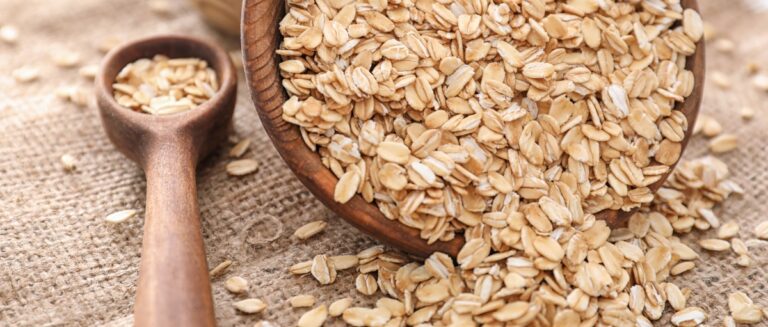Did you know that fall colors are actually present in leaves year-round? It’s true! The vibrant hues of red, orange, and yellow are simply masked by green chlorophyll during spring and summer. This is just one of the many surprising facts about autumn that will make you see this time of year in a whole new light.
What causes leaves to change color in the first place? Why do we carve pumpkins on Halloween? And what’s the real story behind the first Thanksgiving? Get ready to impress your friends and family with your autumn facts as we explore the answers to these questions and more.
Fall is a season beloved by many, and it’s easy to see why. From sipping pumpkin spice lattes to taking scenic drives to admire the foliage, there’s no shortage of enjoyable fall activities. In fact, a recent survey found that 45% of Americans consider fall to be their favorite season, beating out summer, spring, and winter.
But there’s more to fall than just cozy sweaters and apple picking. In this article, we’ll dive into the science behind the season, uncovering the fascinating reasons behind cooler temperatures, shorter days, and the brilliant display of fall colors. We’ll also explore fall traditions around the world, from the Celtic origins of Halloween to lunar festivals in East Asia.
So grab a mug of hot apple cider and get ready to fall in love with autumn all over again.
The Science of Fall
To truly appreciate the beauty of fall, it helps to understand the science behind the season. From the celestial events that mark the beginning of autumn to the biological processes that create those stunning fall colors, there’s a lot more to this time of year than meets the eye.
The Autumnal Equinox
Fall officially begins on the autumnal equinox, which usually occurs around September 22nd in the Northern Hemisphere. On this day, the Earth’s axis is tilted neither toward nor away from the sun, resulting in approximately equal hours of daylight and darkness.
Interestingly, the exact date of the equinox can vary slightly from year to year. This is because the Earth’s orbit around the sun is not a perfect circle but rather an ellipse. The slight variation in the Earth’s position relative to the sun can cause the equinox to occur a day or two before or after the expected date.
Changing Leaf Colors
One of the most iconic sights of fall is the brilliant display of colors in the trees. But have you ever wondered what causes leaves to change from green to red, orange, and yellow? It all comes down to the pigments inside the leaves.
During spring and summer, leaves are filled with chlorophyll, the pigment that gives them their green color and helps them produce food for the tree through photosynthesis. But as the days get shorter and temperatures drop, trees produce a stress hormone called abscisic acid, which prepares them for winter by stopping the production of chlorophyll.
As the green fades away, other pigments that were present in the leaf all along become visible. These include:
- Carotenoids: Which produce yellow and orange hues
- Anthocyanins: These create shades of red and purple
The amount and intensity of these pigments can vary based on factors like the tree species, temperature, and amount of sunlight, resulting in the unique mix of colors we see each fall.
Cooler Temperatures
Another defining characteristic of fall is the noticeable drop in temperature. While it might seem like the weather gets colder as a result of the changing leaves or shorter days, it’s actually the other way around.
As the Earth travels around the sun, the Northern Hemisphere begins to tilt away from the sun in the fall. This means that the sun’s rays have to travel through more of the Earth’s atmosphere to reach the ground, which dissipates some of their energy and results in cooler temperatures.
At the same time, the days are getting shorter, and the nights are getting longer. This decrease in daylight hours means that the Earth has less time to absorb heat from the sun, contributing to the overall cooling trend.
The changing angle of the sun also affects weather patterns, with many areas experiencing drier, crisper air as high pressure systems become more dominant. So while the colorful leaves may be the most eye-catching aspect of fall, it’s really the Earth’s position relative to the sun that sets the stage for this beautiful season.
Fall Traditions Around the World
Fall is a time rich in traditions, many of which have deep historical and cultural roots. From the spooky celebrations of Halloween to the cozy gatherings of Thanksgiving, these customs have become integral parts of the season for many people around the world.
Halloween
Halloween as we know it today has its origins in the ancient Celtic festival of Samhain, which marked the end of the harvest season and the beginning of the darker half of the year. The Celts believed that on this night, the boundary between the world of the living and the dead became blurred, allowing spirits to pass through.
To ward off evil spirits, people would dress up in costumes and carve scary faces into turnips, a practice that eventually evolved into the jack-o’-lanterns we know today. When Irish immigrants brought these traditions to America in the 19th century, they found that pumpkins were easier to carve than turnips, and so the pumpkin became the go-to canvas for spooky designs.
Trick-or-treating, another hallmark of modern Halloween, has its roots in the medieval practice of “souling,” where the poor would go door-to-door on All Souls’ Day, offering prayers for the dead in exchange for food. Over time, this custom merged with the mischievous pranks of “guising,” where children would dress up in costumes and perform songs or jokes in exchange for treats.
Thanksgiving
Thanksgiving is a quintessentially American holiday that traces its origins back to 1621, when the newly arrived Pilgrims in Plymouth, Massachusetts celebrated a successful harvest with a feast that lasted three days. Attendees included 90 Wampanoag Native Americans who had helped the Pilgrims survive their first year in the New World.
While the exact menu of that first Thanksgiving is unknown, it likely included native foods like wild fowl, venison, and seafood, along with Pilgrim staples like cabbage, onions, and carrots. Pumpkin was probably served, but not in the form of pie—it would be another 50 years before the first recorded recipe for pumpkin pie appeared.
Interesting facts about Thanksgiving:
- The first Macy’s Thanksgiving Day Parade took place in 1924 and featured live animals from the Central Park Zoo
- Americans consume an estimated 46 million turkeys each Thanksgiving
- The average American will consume around 4,500 calories on Thanksgiving Day
Other Fall Festivals
Many other cultures around the world have their own fall traditions and festivals. In Germany, Oktoberfest is a world-famous celebration of Bavarian culture that features beer, food, and music. Despite its name, Oktoberfest actually begins in September and lasts for 16-18 days.
In Mexico and other Latin American countries, Día de Los Muertos (Day of the Dead) is a holiday that honors deceased loved ones. Celebrated on November 1st and 2nd, it features colorful altars, parades, and offerings of food and drinks to the spirits of the dead.
In China and other parts of East Asia, the Mid-Autumn Festival celebrates the full moon that occurs on the 15th day of the 8th month of the lunar calendar, usually in September or October. The festival is associated with moon cakes, lanterns, and family gatherings.
From the spooky thrills of Halloween to the cozy comforts of Thanksgiving, fall traditions offer something for everyone to enjoy. Whether steeped in centuries of history or relatively new additions to the seasonal calendar, these customs help create a sense of warmth, togetherness, and festivity during this beautiful time of year.
Autumn Facts About the Natural World
As the seasons change, so too does the behavior of plants and animals. In fall, the natural world undergoes a series of transformations as living things prepare for the colder months ahead.
Animal Adaptations
One of the most well-known fall animal behaviors is migration. Many species of birds, including geese, ducks, and songbirds, fly south to escape the cold and find more abundant food sources. Monarch butterflies also undertake an impressive migration, traveling thousands of miles from the United States and Canada to overwinter in Mexico.
For animals that stay put, fall is a time to prepare for hibernation. Bears, skunks, chipmunks, and groundhogs all fatten up on autumn’s bounty before retreating to their dens for a long winter’s nap. Hibernation allows these animals to conserve energy and survive the scarce food and harsh conditions of winter.
Other animals, like squirrels, spend the fall busily gathering and storing food for the winter. Acorns, nuts, and seeds are cached in various locations, ensuring a steady food supply even when the ground is covered in snow. Interestingly, a squirrel’s brain actually grows in size during the fall to help it remember where it has hidden all its stashes.
Plant Changes
Just as animals adapt to the changing seasons, so too do plants. In autumn, deciduous trees like maples, oaks, and aspens begin to shut down photosynthesis in preparation for winter. As the green chlorophyll fades, other pigments are revealed, creating the vibrant red, orange, and yellow hues of fall foliage.
While the leaves are certainly the stars of the show, trees are also busy behind the scenes, drawing nutrients back into their roots and reducing a hormone called auxin. This, in turn, puts a strain on the abscission layer, causing the leaves to detach from the branches. This process is what allows trees to survive the winter and grow new leaves in the spring.
Fall is also an important time for seed dispersal. Many plants, including milkweed and dandelions, release their seeds on the autumn winds, ensuring a new generation will sprout in the spring. Other plants, like acorns and chestnuts, rely on animals to disperse their seeds far and wide.
Fabulous Fall Flavors
One of the best things about fall is the abundance of delicious seasonal foods. From pumpkin spice everything to hearty soups and stews, autumn offers a cornucopia of flavors to savor.
Pumpkin Pandemonium
Pumpkins are perhaps the most iconic fall food. But did you know that pumpkins are actually a type of winter squash? And that they’re technically a fruit, not a vegetable? Here are some more autumn fun facts about everyone’s favorite orange gourd:
- The world’s heaviest pumpkin on record weighed in at a whopping 2,794 pounds (1,246 kg)
- Pumpkin pie was not served at the first Thanksgiving—the Pilgrims didn’t have oven, and pumpkins were likely stewed or roasted
- Pumpkin spice doesn’t actually contain any pumpkin—it’s a blend of cinnamon, nutmeg, ginger, and allspice
Apple Everything
Apples are another quintessential fall food. From apple pie to apple cider, this versatile fruit takes center stage in many autumn recipes. Some interesting apple facts:
- There are over 7,500 varieties of apples grown worldwide
- The science of growing apples is called pomology
- Apples are a member of the rose family, along with pears, peaches, and plums
Savory Seasonal Dishes
Fall is also a great time for hearty, comforting dishes like soups, stews, and casseroles. Root vegetables like carrots, parsnips, and sweet potatoes are at their peak, lending a natural sweetness to savory dishes. Slow cookers and Dutch ovens get a workout as people gravitate towards warm, filling meals that chase away the autumn chill.
Some classic fall flavor combinations include:
- Butternut squash and sage
- Pork and apples
- Sweet potatoes and marshmallows
- Cinnamon and nutmeg
Favorite Fall Activities
Fall is a season meant to be enjoyed outdoors. From leaf peeping to football tailgating, there are countless ways to soak up the crisp autumn air and revel in the beauty of the season.
Leaf Peeping
One of the most popular fall activities is leaf peeping—traveling to view and photograph the changing colors of the foliage. Some of the best places in the United States for leaf peeping include:
- New England, particularly Vermont, New Hampshire, and Maine
- The Great Smoky Mountains of Tennessee and North Carolina
- The Rocky Mountains of Colorado
- The Upper Peninsula of Michigan
Peak leaf-peeping season varies by location but generally falls between mid-September and late October. Many states offer fall foliage reports and maps to help visitors plan their trips.
Fall Sports
Fall is also a big time for sports, particularly football. From high school games to college tailgates to pro stadiums, football is a major part of the autumn landscape. Some interesting football facts:
- The first professional football game was played in 1892 in Pittsburgh, PA
- The shape of a football is called a prolate spheroid
- The first footballs were made from inflated pig bladders
Other popular fall sports include soccer, cross country, and the World Series of baseball.
Autumn Agritourism
Fall, sometimes called harvest season, is a time when many farms invite visitors to join in the fun. Corn mazes, hayrides, and pumpkin patches are all popular autumn agritourism activities. Some farms also offer apple picking, cider pressing, and other seasonal experiences.
Agritourism not only provides a fun way for people to connect with the land and learn about where their food comes from, but it also helps support local farmers and rural economies.
The Season of Change
From the science behind the changing leaves to the cultural traditions that mark the harvest season, fall is a time of fascinating transformations. As the air turns crisp and the days grow shorter, it’s the perfect opportunity to slow down, savor the moments, and appreciate all the wonders this beautiful season has to offer.
Whether you’re sipping a pumpkin spice latte, taking a scenic drive to admire the foliage, or cozying up with a good book by the fire, there are countless ways to embrace the autumn spirit. So grab a sweater, head outside, and soak up all the sights, sounds, and flavors of fall. You just might find yourself falling in love with this season of change.
Sources
WebMD. (n.d.) Health benefits of chlorophyll. Retrieved from https://www.webmd.com/diet/health-benefits-chlorophyll
CBS News. (2023.) Fall is Americans’ favorite season, survey shows. Retrieved from https://www.cbsnews.com/minnesota/news/fall-is-americans-favorite-season-survey-shows/
Britannica. (n.d.) Autumnal equinox. Retrieved from https://www.britannica.com/science/autumnal-equinox
Appalachian State University. (n.d.) The hidden colors of leaves: What are the functions of those yellow and orange pigments we see in the fall? Retrieved from https://biology.appstate.edu/fall-colors/hidden-colors-leaves-what-are-functions-those-yellow-and-orange-pigments-we-see-fall
National Institutes of Health. (2020.) Article on pigments and plant biochemistry. Retrieved from https://www.ncbi.nlm.nih.gov/pmc/articles/PMC7727665/
National Weather Service. (n.d.) The four seasons. Retrieved from https://www.weather.gov/cle/seasons
HauntPay. (2023.) The history of Halloween and its traditions. Retrieved from https://hauntpay.com/2023/10/the-history-of-halloween-and-its-traditions/
Arizona State University Wellness. (n.d.) Halloween myths debunked. Retrieved from https://wellness.asu.edu/blog/halloween-myths-debunked
Farmers’ Almanac. (n.d.) All Souls’ Day traditions, legends, and beliefs. Retrieved from https://www.farmersalmanac.com/all-souls-day-traditions-legends-and-beliefs
Mercat Tours. (n.d.) The history of guising on Halloween. Retrieved from https://www.mercattours.com/blog-post/the-history-of-guising-halloween
History.com. (n.d.) The history of Thanksgiving. Retrieved from https://www.history.com/topics/thanksgiving/history-of-thanksgiving
U.S. History. (n.d.) The Pilgrims and the Plymouth Colony. Retrieved from https://www.ushistory.org/us/3b.asp
Macy’s Thanksgiving Day Parade. (n.d.) The first NYC Thanksgiving Day Parade. Retrieved from https://www.thanksgivingparade.com/the-first-nyc-thanksgiving-day-parade/
Deseret News. (2023.) How many turkeys are killed each year for Thanksgiving? Retrieved from https://www.deseret.com/2023/11/18/23950898/how-many-turkeys-are-killed-each-year-for-thanksgiving/
Consumer Reports. (n.d.) Calories in your Thanksgiving dinner. Retrieved from https://www.consumerreports.org/diet-nutrition/calories-in-your-thanksgiving-dinner/
WebMD. (n.d.) Health benefits of chlorophyll. Retrieved from https://www.webmd.com/diet/health-benefits-chlorophyll
CBS News. (2023.) Fall is Americans’ favorite season, survey shows. Retrieved from https://www.cbsnews.com/minnesota/news/fall-is-americans-favorite-season-survey-shows/
Britannica. (n.d.) Autumnal equinox. Retrieved from https://www.britannica.com/science/autumnal-equinox
Appalachian State University. (n.d.) The hidden colors of leaves: What are the functions of those yellow and orange pigments we see in the fall? Retrieved from https://biology.appstate.edu/fall-colors/hidden-colors-leaves-what-are-functions-those-yellow-and-orange-pigments-we-see-fall
National Institutes of Health. (2020.) Article on pigments and plant biochemistry. Retrieved from https://www.ncbi.nlm.nih.gov/pmc/articles/PMC7727665/
National Weather Service. (n.d.) The four seasons. Retrieved from https://www.weather.gov/cle/seasons
HauntPay. (2023.) The history of Halloween and its traditions. Retrieved from https://hauntpay.com/2023/10/the-history-of-halloween-and-its-traditions/
Arizona State University Wellness. (n.d.) Halloween myths debunked. Retrieved from https://wellness.asu.edu/blog/halloween-myths-debunked
Farmers’ Almanac. (n.d.) All Souls’ Day traditions, legends, and beliefs. Retrieved from https://www.farmersalmanac.com/all-souls-day-traditions-legends-and-beliefs
Mercat Tours. (n.d.) The history of guising on Halloween. Retrieved from https://www.mercattours.com/blog-post/the-history-of-guising-halloween
History.com. (n.d.) The history of Thanksgiving. Retrieved from https://www.history.com/topics/thanksgiving/history-of-thanksgiving
U.S. History. (n.d.) The Pilgrims and the Plymouth Colony. Retrieved from https://www.ushistory.org/us/3b.asp
Macy’s Thanksgiving Day Parade. (n.d.) The first NYC Thanksgiving Day Parade. Retrieved from https://www.thanksgivingparade.com/the-first-nyc-thanksgiving-day-parade/
Deseret News. (2023.) How many turkeys are killed each year for Thanksgiving? Retrieved from https://www.deseret.com/2023/11/18/23950898/how-many-turkeys-are-killed-each-year-for-thanksgiving/
Consumer Reports. (n.d.) Calories in your Thanksgiving dinner. Retrieved from https://www.consumerreports.org/diet-nutrition/calories-in-your-thanksgiving-dinner/











